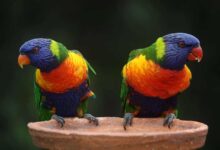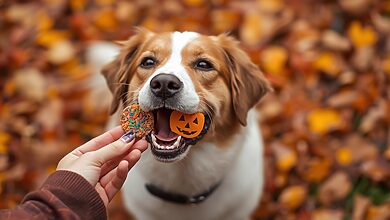Setting Up a Bird Cage: Comprehensive Guide for Beginners

Introducing a new avian member to your home requires careful consideration and a well-prepared living environment. Follow these expert tips and tricks to ensure your feathered friend feels safe, comfortable, and at home in their new bird cage sanctuary.
Understanding the Basics
Before diving into the intricate details of setting up a bird cage, it’s crucial to grasp the fundamental principles that contribute to a healthy and conducive living space for your bird companion. Factors such as cage size, material, and placement play a pivotal role in creating a comfortable and secure environment.
Choosing the Right Bird Cage: Size, Material, and Placement
Selecting an appropriate cage size that allows ample room for your bird to move freely and extend its wings without constraint is essential. Opt for durable and non-toxic materials that ensure the bird’s safety and well-being. Additionally, strategically position the cage in a well-lit area, away from direct sunlight and drafts, to create an ideal living space for your feathered companion.
Understanding the Needs of Different Bird Species
Different bird species have varying habitat requirements and behavioral patterns. Research the specific needs of your bird species, whether it’s a parrot, cockatiel, budgie, canary, lovebird, finch, macaw, African grey, Amazon parrot, cockatoo, conure, or parakeet, to tailor the cage setup according to their preferences and habits. This understanding will enable you to create an environment that caters to their specific needs, ensuring their comfort and well-being.
Essential Components for a Well-Planned Bird Cage Setup
Creating an enriching and engaging living space for your feathered friend involves incorporating essential components that foster their physical and mental stimulation. Pay attention to the following key elements when setting up your bird cage.
Perches: Providing Comfort and Variety
Incorporate multiple perches of varying thickness and texture to promote foot exercise and prevent foot-related health issues. Ensure that the perches are placed at different heights within the cage to encourage natural movement and provide your bird with diverse resting spots.
Feeders and Waterers: Promoting Healthy Eating Habits
Choose feeders and waterers that are appropriate for your bird’s beak size and type. Opt for easy-to-clean options that facilitate regular maintenance and ensure that fresh food and water are readily accessible to your bird at all times. Regularly monitor food levels and clean the feeders to prevent bacterial growth and contamination.
Toys: Stimulating Mental Engagement
Select a variety of toys that cater to your bird’s natural instincts and behaviors. Incorporate interactive toys that encourage foraging, chewing, and physical activity, promoting mental stimulation and preventing boredom. Rotate the toys regularly to sustain your bird’s interest and provide a dynamic and engaging living space.
Bedding: Ensuring Comfort and Hygiene
Choose a suitable bedding material that is non-toxic, absorbent, and easy to clean. Line the cage bottom with a layer of bedding that prevents the accumulation of waste and maintains a clean and hygienic living environment for your bird. Regularly replace the bedding to prevent the build-up of bacteria and maintain optimal cage hygiene.
Maintaining Bird Cage Safety and Hygiene
Safeguarding your bird’s well-being involves implementing stringent safety measures and adhering to a consistent cleaning and maintenance routine. Prioritize your bird’s health and safety by following these essential safety and hygiene practices.
Regular Cage Cleaning: Preventing Bacterial Growth
Establish a regular cleaning schedule to maintain a hygienic living environment for your bird. Clean the cage, perches, feeders, and toys with bird-safe cleaning solutions to eliminate bacterial contamination and prevent the spread of infectious diseases. Ensure thorough drying of all components before reintroducing them into the cage to prevent mold and bacterial growth.
Ensuring Adequate Ventilation and Temperature Control
Maintain proper ventilation within the cage to promote fresh air circulation and prevent the accumulation of stale air and airborne pollutants. Monitor the temperature within the cage to ensure it remains within the optimal range for your bird’s comfort and well-being. Avoid exposing the cage to extreme temperature fluctuations or drafts that may compromise your bird’s health.
Implementing Bird-Safe Cage Accessories and Additions
Avoid incorporating any cage accessories or additions that may pose a potential safety hazard to your bird, such as sharp or pointed objects, toxic materials, or small, easily ingestible parts. Prioritize bird-safe, non-toxic, and durable cage accessories that promote your bird’s well-being and prevent any accidental injuries or health complications.
Setting Up a Bird Cage
By implementing these comprehensive guidelines for setting up a bird cage, you can create an inviting and nurturing environment that promotes your bird’s physical health, mental stimulation, and emotional well-being. Strive to create a harmonious and secure living space that reflects your commitment to providing the best possible care for your feathered companion. With careful planning, thoughtful consideration, and regular maintenance, you can ensure that your bird’s living environment remains a safe, comfortable, and engaging sanctuary that fosters a strong and enduring bond between you and your beloved avian friend.





